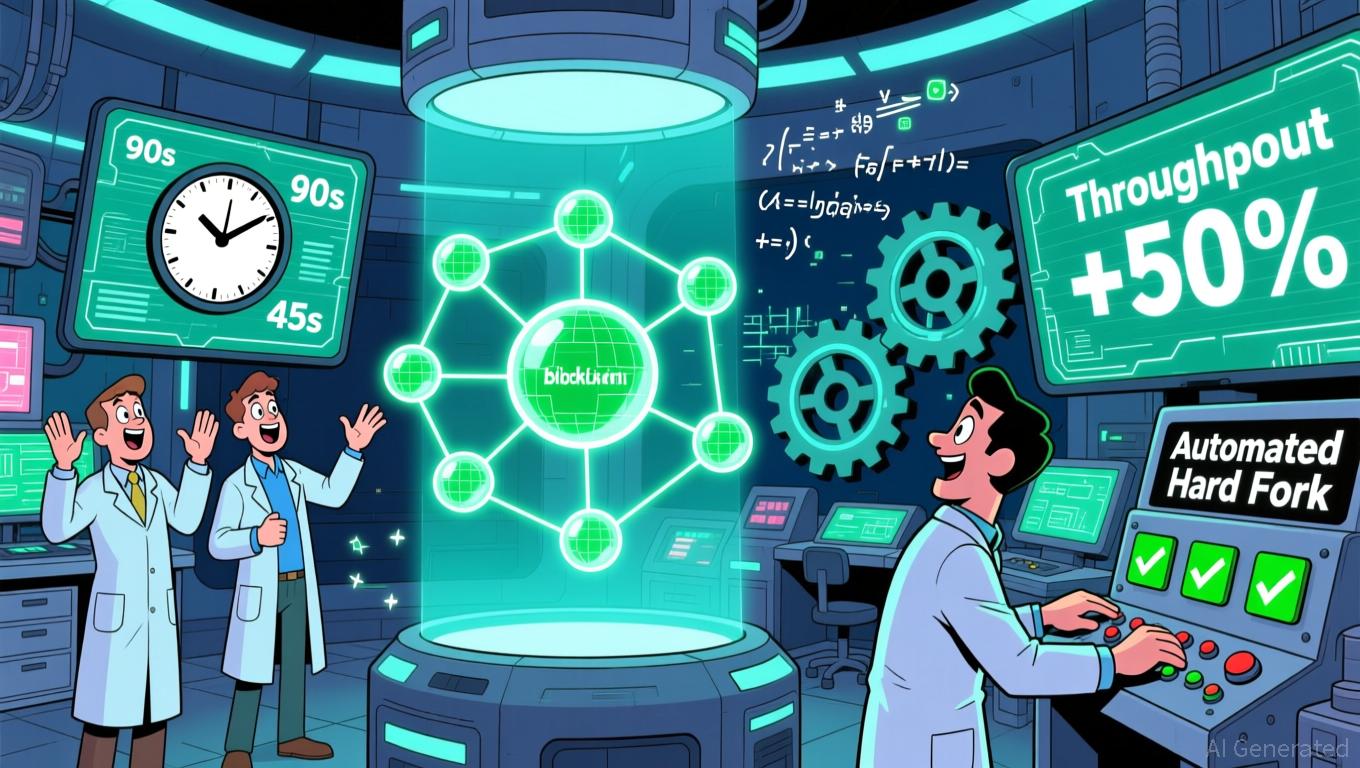Quantum Computing and Blockchain Converge in the Quest to Safeguard Future Technologies
- IonQ and IBM advance in DARPA's QBI program, targeting 2M qubits by 2030 and fault-tolerant quantum systems. - D-Wave reports mixed Q3 results but raises 2025-2026 revenue forecasts after $1.8M German contract and analyst optimism. - Belden and WISeKey develop quantum-safe networking/satellite solutions to protect infrastructure from future quantum threats. - Crypto market surges 30-34% post-shutdown resolution, with institutional interest in cross-border payment tokens like HBAR/XLM. - Blaqclouds and ra
Recent progress in quantum computing and blockchain is significantly altering the tech industry, bringing both new hurdles and promising prospects to the forefront.
At the same time,

Within blockchain infrastructure, organizations are focusing on quantum-resistant technologies. Belden Inc. has teamed up with ChicagoQuantum to create quantum-secure networking protocols, aiming to safeguard vital infrastructure from future quantum threats, as covered in
New initiatives are also broadening the blockchain landscape. Blaqclouds, Inc. has finalized the integration of Apollo ID, a decentralized identity solution for its Apollo Wallet and ZEUSx platforms, enabling encrypted on-chain KYC and NFT-based identity verification, as mentioned in
As quantum computing and blockchain continue to evolve together, the balance between computational advancements and cryptographic protection remains a central concern. While progress in quantum benchmarking and post-quantum encryption is promising, it also emphasizes the need to update current systems to prevent security gaps. The next few years are expected to bring increased collaboration among technology companies, government agencies, and researchers as they adapt to this rapidly changing environment.
Disclaimer: The content of this article solely reflects the author's opinion and does not represent the platform in any capacity. This article is not intended to serve as a reference for making investment decisions.
You may also like
XRP News Today: SEC Approval of XRP ETF May Spark $5 Price Jump, Echoing Bitcoin ETF Surge
- XRP's potential surge hinges on SEC ETF approval and Fed rate decisions, with analysts projecting $5+ prices if institutional demand mirrors Bitcoin/Ethereum ETF trends. - Ripple's global liquidity network expansion and $500M institutional backing strengthen XRP's case, while technical indicators suggest $2.60-$2.70 as key near-term thresholds. - Market risks include Fed policy impacts, AI/meme coin competition, and whale inactivity, though $100B ETF volume projections could drive a 2024-2026 rally to $5

Trailblazers Forge Mina’s Mesa Route: Joint Testing Transforms Blockchain Advancements
- Mina Protocol's "Mesa" upgrade introduces faster block slots, expanded on-chain limits, and automated hard forks to enhance performance and developer capabilities. - The five-phase testing plan includes internal validation, testnet experiments, and incentivized community trials to ensure seamless mainnet deployment. - Automated upgrades and expanded zkApp support aim to reduce operational complexity while maintaining network security and accessibility for node operators. - Collaborative testing through T

Ethereum News Today: "Ethereum Giants Face Off: $37 Million Long Position Battles $9.9 Million Short in High-Risk Hyperliquid Wager"
- Ethereum whales opened $37M long and $9.9M short positions with 25x leverage on Hyperliquid, highlighting crypto's high-stakes trading dynamics. - Hyperliquid's deep liquidity and transparent execution attract large players using stablecoins to fund leveraged positions amid volatile markets. - Technical analysis shows Ethereum facing resistance at key levels, while macroeconomic factors like US-China tensions drive risk-averse trading behavior. - Experts warn high-leverage positions risk rapid liquidatio
Hyperliquid News Today: DeFi 'Degen Warfare' Erupts: POPCAT Exploit Results in $4.9M Loss for Hyperliquid
- Hyperliquid suffered a $4.9M loss from a POPCAT token manipulation attack orchestrated by a single trader exploiting thin liquidity and automated risk systems. - The attacker used 19 wallets to inflate POPCAT's price before liquidity removal triggered cascading liquidations, forcing Hyperliquid's HLP to absorb remaining losses. - POPCAT's price dropped 19% in 24 hours to $0.1262, exposing vulnerabilities in DeFi platforms' ability to prevent market manipulation in low-liquidity memecoin markets. - This f
